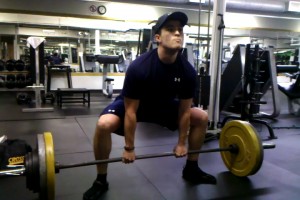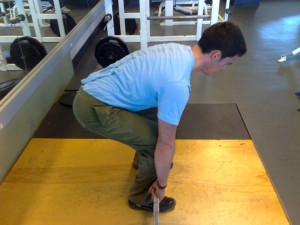It’s interesting to consider the things we do that come to symbolize our roles. Sometimes, they make sense: the pilot would not feel like a pilot if he did not fly planes, because flying planes is why his job exists. His day may consist of 99% paperwork and 1% flying, but flying is nevertheless sine qua non for piloting. At other times, the symbol is more metaphorical than real; for instance, the white lab coat has come to symbolize the physician’s trade (new graduates even receive them in elaborate ceremonies), despite the fact that a doctor’s job is not to wear coats.
Many paramedics consider endotracheal intubation to be an important part of their identity, for reasons that are unclear, but probably related to the drama, the skill, and especially the exclusivity of the act; relatively few players in the medical field are permitted to intubate, so the medic is proud of the privilege and responsibility. (Obviously, this has nothing to do with whether or not putting tubes down throats helps anybody, but that’s a topic for another day.) And in the public’s eyes, throwing a stethoscope around your neck will instantly identify you as a medical professional.
With all of that said, however, on a typical day we can do our job very well without an ET tube or a dangling scope; those are tools, but not essential tools. We do have essential tools, but they are often nothing more than boring, everyday practices, and as a result we don’t talk about them as much as we should. Know what the biggest one of all is?
Lifting
EMS is not the infantry, or even the fire service, and the level of physical fitness required to do our job is… well, let us say that most of us live up to the requirements, and no more. We rarely run anywhere and the most we’ll sweat is during a stairchair carry or the occasional chest compression. However, one physical ability is part of our job description, and that’s the ability to lift patients.
All of us do this countless times a day, whether we’re large or small, male or female, tall or short. It’s therefore tempting to say that it’s not difficult, and that even the weak can do it. The truth is, though, that a strong individual, lifting with excellent biomechanics, is simply better in this business than a weaker colleague. The difference is not always obvious, which is why both strong and weak do manage to survive in this job, but you can also “survive” in this job being barely literate or mostly blind, and nobody would doubt that those negatively impact your work. Strong people transfer patients from stretcher to bed smoothly and without bumps or drops. They can easily maneuver the unconscious patient out of the cramped, awkward corner he’s found in. And most of all, they can always, always lift and carry anyone, without requiring either extra assistance or elaborate workarounds. We all know the tiny EMT who’s otherwise a fine partner, but who needs to call for a lift assist in order to boost the stretcher when there’s anything heavier than a bird’s nest on it — and while this is often not a problem, and we may know and love that EMT, he would be a better EMT if he could lift more, and that’s simply that. More selfishly, he would also remain physically capable of doing this job as long as he cares to, no small feat in a field where back injuries are more the rule than the exception.
The good news is almost anyone can learn to lift and get stronger. In my opinion, the easiest approach to this is a simple linear strength program using barbells — and although for novices, a broad and well-rounded program is ideal, the single most important lift for the EMT is undoubtedly the deadlift.
The deadlift involves bending over, grabbing an object with your hands, and standing up. This is the exact movement that you execute when lifting a stretcher, and variations of it are used in everything from carrying the stairchair to performing a fore-and-aft lift. The primary driver of this movement is extension (straightening) of the hips using the glutes and hamstrings, and the primary static challenge is maintaining a straight and rigid spine against the load trying to round it forward, which is the job of the spinal erectors. The hips are the engine, the back is the transmission.
Extension of the knees, which is performed by the quadriceps, is generally considered a secondary driver in the deadlift, since it’s weaker than hip extension. However, performing the lift with the butt lower and torso more upright does have the advantage of keeping the spine more vertical, which makes it easier to prevent it from rounding during the lift. Although you can lift in complete safety with a very horizontal back, and the more vertical stance does limit the weight you can lift, this is generally considered a good tradeoff in EMS (where we’re not trying to lift maximal weights, so much as lift many submaximal weights in complete safety). This is why the occupational safety poster on the garage wall tells you to “lift with your knees, not with your back” (a clumsy way of saying to bend the knees more and the hips less, remaining fairly upright; you never really “lift with your back” unless you’re doing things very wrong).
The “sumo” deadlift, which uses a wider stance, more upright posture, and arms inside (rather than outside) the legs, is the closest approximation to how we typically lift a stretcher. It lets us get as close to the load as possible, which again reduces the shearing force on the spine; the conventional (non-sumo) deadlift tends to force us to lift with the load dangling out in front of us, because our knees get in the way. But no matter what, the primary challenge is to maintain a flat, rigid back, and deadlifting trains us to do this by teaching the proper posture, as well as improving our ability to hold that posture against heavy loads by taxing and strengthening the erectors.
For the purposes of this job, it is probably worth training both the sumo and conventional deadlift. My own background is primarily with the conventional, so I have some bias, but even if (like me) you primarily “pull” with conventional form, it’s worth practicing the sumo on occasion, in order to master the technique — again, when you lift stretchers and other real-life items, it’s generally more sumo than not. In sumo style, the movement of lifting a stretcher can be replicated exactly in the gym using a barbell, with the exception of the position of your palms, which are supinated (underhand, or palms forward) on a stretcher, but pronated (overhand, or palms in) with the barbell. Deadlifting heavy with a supinated grip carries some risk of shoulder strain or tearing a bicep, so it’s not worth practicing.
It’s difficult to put numbers on things, and your ability to use the right tricks and techniques in the field may let you get away with less muscular strength. But in my humble opinion, a good goal for every working EMT or paramedic should be to safely and manageably (that is, not as a back-breaking, hitching maximal lift, but something you could perform for repetitions) deadlift 200 pounds. For small females, this may be a substantial challenge that requires some training. Many moderate-sized to heavy males will be able to pull this weight with no training; those individuals should aim for 300+ pounds. 300lb is a deadlift that will allow you to handle 99% of what this job throws at you.
These are not serious weights. True strength athletes deadlift many times this (I pull around 435 myself, and am not even close to being strong), and I’m not suggesting you go down that road, although if you enjoy the training, it has many benefits. Rather, this is a readily achievable milestone, low-hanging fruit that any healthy individual who does this job should be able to work towards within a period of several months. And once strength is obtained, it’s a fairly durable adaptation; unlike some physical skills (such as cardiovascular endurance), it sticks with you even if you’re no longer training it. Once you’re there, it would be good to keep lifting at least once a week or so, but even if you do not, the daily exertions of the job should be enough to largely maintain your level of strength. This is a gift that will keep on giving, and it’s very worth setting as a goal.


We enjoyed visiting this page. We like cryptocurreny. Link to our art at http://cryptonftmarketplace.co. I appreciate any twitter shares. Have an excellent day Thanks Kindly
Thanks for the info. I’m a personal trainer and I have a client (11th grader) who is studying for EMT. I’m trainer to be able to deadlift. She has a heart condition so can’t really do deadlifts regularly. Any pressure on the chest could cause damage. Unless she strengthens those chest muscles. That’s where I came in. And this is very helpful. I’m thinking about tire flips every other week.
Thanks for the info. I’m a personal trainer and I have a client (11th grader) who is studying for EMT. I’m training her to be able to deadlift. She has a heart condition so can’t really do deadlifts regularly. Any pressure on the chest could cause damage. Unless she strengthens those chest muscles. That’s where I came in. And this is very helpful. I’m thinking about tire flips every other week.